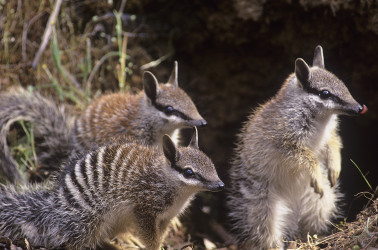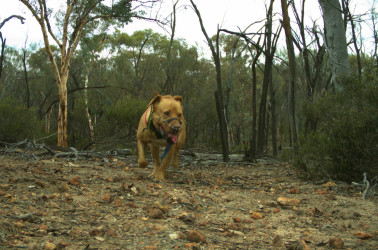This Project aligns perfectly with FAME’s priorities because it brings partly under our umbrella, not only the Numbat population in areas of WA, but also several other, threatened, species.
A single program with a potential outcome that benefits four priority species in the Federal Government’s Threatened Species Strategy is a wonderful involvement for our organisation.
What will man’s best friend do? The Project has several parts including:
Identifying dogs trained to detect feral cats specifically in the Numbats’ habitat;
Objectively measuring the effectiveness of the trained dogs in detecting feral cats; and
Refining the project as it proceeds to optimise the dogs’ effectiveness.
The dogs are not there to tackle feral cats directly; indeed, they will be trained not to do so. Their task will be solely to ensure the handler can identify that a feral cat is nearby or that there is a lot of feral cat activity in an area.
FAME knows that some people become upset at the prospect of a cat being killed but as we constantly remind people, the nexus between a domestic pet and a feral killer is about the same as that of a pet Chihuahua and a wolf. Feral cats are ferocious and efficient killers and they must kill in order to survive. Therefore, unless they are brought under control, the threat to Australian species will remain.
So, if the detector dog project works, what outcomes should we expect?
There are quite a few potential outcomes including a reduced number of feral cats in the Numbats’ habitat; greater understanding of the feral cat population in those areas; an understanding of the value of detector dogs in this critically important endeavour and; of course, Numbats having a better chance of survival.
The project will be overseen by the WA Department of Biodiversity, Conservation and Attractions. The overarching goal is simple enough: reduce the pressure on Numbats posed by feral cats. Whether this is achieved will be assessed through continual monitoring undertaken by the Department of Biodiversity, Conservation and Attractions that includes tracking Numbats with radio collars and remote camera surveillance, among other things.
Entities involved or consulted as part of this project include:
• The Australian Government and the Threatened Species Commissioner
• The WA Department of Biodiversity, Conservation and Attractions
• The Numbat Task Force
UPDATES
27 OCTOBER 2018; FAME's early support for Numbat Project leads to Conservationist of the Year Award. Read more: Media release
18 AUGUST 2018; Project update: Protecting the last population of wild Numbats. Read more: Project Update
31 MAY 2018; Teaching detector dogs new tricks. Read more: Teaching detector dogs new tricks
22 FEBRUARY 2018; Protecting the last wild population of Numbats. Read more: Protecting the Numbats
27 OCTOBER 2018; Rob McLean named Australian Geographic's Conservationist of the Year for 2018. Read more: FAME celebrates exciting news



